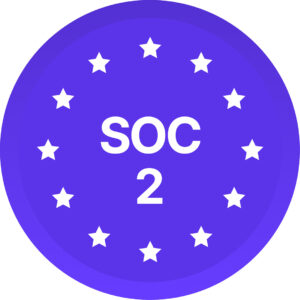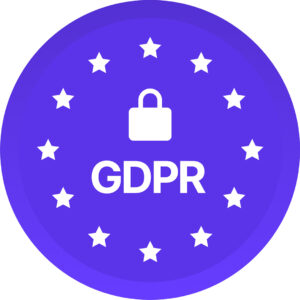Diversity Equity and Inclusion (DEI) training greatly impacts an organization’s culture, growth, and employee satisfaction. Diversity, equity, and inclusion (DEI) are three closely linked values that promote the fair treatment and full participation of different groups of individuals. Diversity refers to who is represented in the workplace, equity refers to fair treatment for all people, and inclusion refers to the extent to which organizations embrace all employees and their contributions. Companies with effective DEI strategies are more likely to respond to challenges, meet customer needs, and retain top talent.
Effective DEI training can have the power to shed light on a company’s underlying problems and work to solve them.
Key Takeaways
- DEI training creates a workplace where employees feel valued, leading to better satisfaction and retention.
- Companies that focus on DEI are more prepared to meet challenges and keep top talent.
- DEI training should be ongoing and part of the company’s daily culture.
- Practical tools and real-life examples in training help employees use what they learn.
- Tracking progress with feedback and diversity data ensures lasting improvements.
Introduction to DEI training
DEI workplace training has taken a long journey to get to where it is today as a key focus for most large companies. Although DEI training did not properly take off until the 1960s, it is now considered a key tool in boosting productivity and innovation in an increasingly diverse workplace.
What is DEI training?
DEI training stands for Diversity, Equity, and Inclusion training. It is designed to help organizations create more inclusive, respectful, and equitable workplaces. This type of training typically covers topics like:
- Understanding and valuing the differences among people in the workplace, such as race, gender, age, sexual orientation, cultural background, and more. (Diversity)
- Ensuring fair treatment, access, and opportunities for all employees, and addressing any imbalances that can lead to disadvantages for underrepresented groups. (Equity)
- Creating a workplace environment where everyone feels valued, respected, and supported, and where diverse perspectives are actively integrated into decision-making processes. (Inclusion)
DEI training often includes exercises to raise awareness about unconscious biases, systemic inequalities, and microaggressions, as well as practical strategies for a more inclusive culture. It equips leaders and employees with tools to embrace diversity, challenge biases, and create a workplace that supports equity for all.
While the importance of DEI training is now widely known, organizations still face many challenges in implementing effective training. Many programs fail to create lasting change following a few training days. Ineffective DEI training can also fail to leave a meaningful impact due to a lack of engagement in the material. However, proper, effective DEI training can dramatically improve your company.
Why do organizations need to implement DEI trainings?
An effective training program can improve employee satisfaction, retention, and productivity. DEI strategies also have the power to benefit organizations financially. Employees who feel valued and safe within their organization are more likely to stay with their employees and perform better. This is because those with a high level of mental well-being are naturally more productive. According to the 2020 LinkedIn Learning Report, 94% of employees would stay at a company longer if it invested in their learning and development. A psychologically safe environment where every voice is heard will support the organization’s success.
Additionally, implementing DEI training sends the message that your company values diversity and truly values the principles of DEI within the company culture.
Corporations must understand the many opportunities they give up by not prioritizing DEI strategy.
Common misconceptions about DEI training
There is a common misconception about the effectiveness of DEI training, particularly that DEI training is a one-off solution that is not effective. Diversity training has the potential to create a self-sustaining cycle. DEI is not a one-time event; it is an ongoing process.
By offering DEI training, you encourage a culture of learning and best practices. Employees will begin to speak the same language as DEI elements become a part of your workplace. Training is the first step in driving your business and building a better workplace.
The role of language in DEI
Implicit bias, or the unconscious attitudes we carry, often affects how we communicate. This can lead to unfair treatment, poor collaboration, and a workplace where employees don’t feel comfortable. For example, someone might assume that an employee’s experience is less valuable just because they were born in a different country than where they live now. To address these biases, companies can use diversity training, mentorship programs, and cultural wellness initiatives to create a more inclusive environment.
Types of DEI training
Diversity, equity, and inclusion training comes in many forms to ensure each company implements training that will have the most impact.
Some of the different types of training include:
- Basic diversity training allows organizations to cover various DEI topics through a foundational program. See DEI Fundamentals Course.
- Awareness training provides an overview of diversity in the workplace. These include the various races, genders, sexual orientations, & ethnicities in the workplace.
- Unconscious bias training eliminates words & actions that may cause unintentional harm. It helps employees recognize their own unintentional biases & judgements about others.
- Cultural sensitivity training helps employees to become mindful of cultural nuances & customs when interacting with others within the organization. Cultural sensitivity training is particularly important for organizations with teams located in different parts of the world.
- Anti-oppression training educated employees about forms of oppression, power dynamics, & privilege.
DEI trainings with real impact
Based on our experience, here are the key elements that make a DEI training program effective.
Clear benefits
Tie DEI efforts to things people care about, like improved team collaboration or innovation. When participants see how diversity and inclusion benefit the company and their own work, it motivates them to take the training seriously.
Relevant
The training should reflect your company’s specific needs and challenges. It should show how DEI applies directly to your workplace and helps solve real problems.
Actionable steps and practical tools
The training should offer practical tips people can use in their everyday work, like how to make hiring more fair, create a more inclusive team environment, or speak up when they notice bias.
Interactive
People learn better when they can participate. Use role-playing, discussions, and real-life examples so participants can see how DEI issues play out and practice responding to them.
Ongoing
DEI training shouldn’t be a one-time session. It is most effective when seen as an ongoing process with the follow-ups, progress checks, and real accountability.
Measuring impact
Once a DEI training strategy has been implemented in your organization, measuring and reevaluating your plan is important. Key metrics to evaluate the effectiveness of the program include diversity percentage in leadership, retention rates, and employee feedback. Employee feedback is particularly important in all types of training, especially DEI training. Diversity, equity, and inclusion training topics are often sensitive for many individuals, making the invitation for peer feedback vital. This could be performed through a formal audit or informal feedback.
Beyond training: Building a holistic company culture
DEI training is not a one-and-done fix to creating an entirely diverse and inclusive organization. Organizations must adopt a holistic approach to diversity with continuous efforts. DEI training should be integrated into other initiatives, such as mentorship programs and workforce education.
If done correctly, a systematic and continuous approach to DEI training can create a long-lasting positive change in your workplace culture, where all employees feel a strong sense of belonging. Organizations should continuously invest and refine their DEI initiative for lasting impact.
Who is Diversio?
Diversio offers a host of self-led, in-person, and customized training and certification programs. We are equipped to address the training needs of any organization. If you are looking to kick-off your DEI training program, contact us today to arrange a complimentary consultation.
By connecting artificial intelligence (AI) technology, sophisticated data analytics, and knowledgeable subject matter experts, Diversio is able to accurately diagnose opportunity areas, benchmark organizations against peers, and create a robust action plan to meet any DEI goal. Through the unique combination of technology and human expertise, Diversio is driving meaningful impact for hundreds of organizations across over 35 countries globally.
Diversio – The Diversity Experts™
For more information on Diversio, or how we can help you start your DEI program book a demo.

